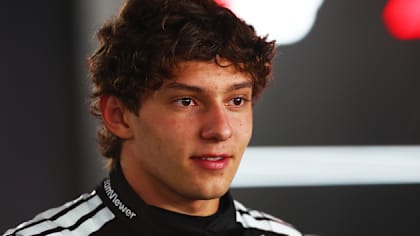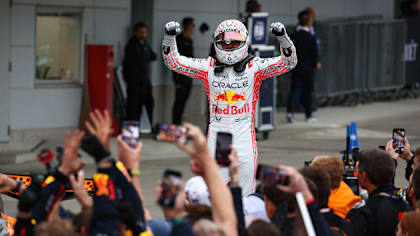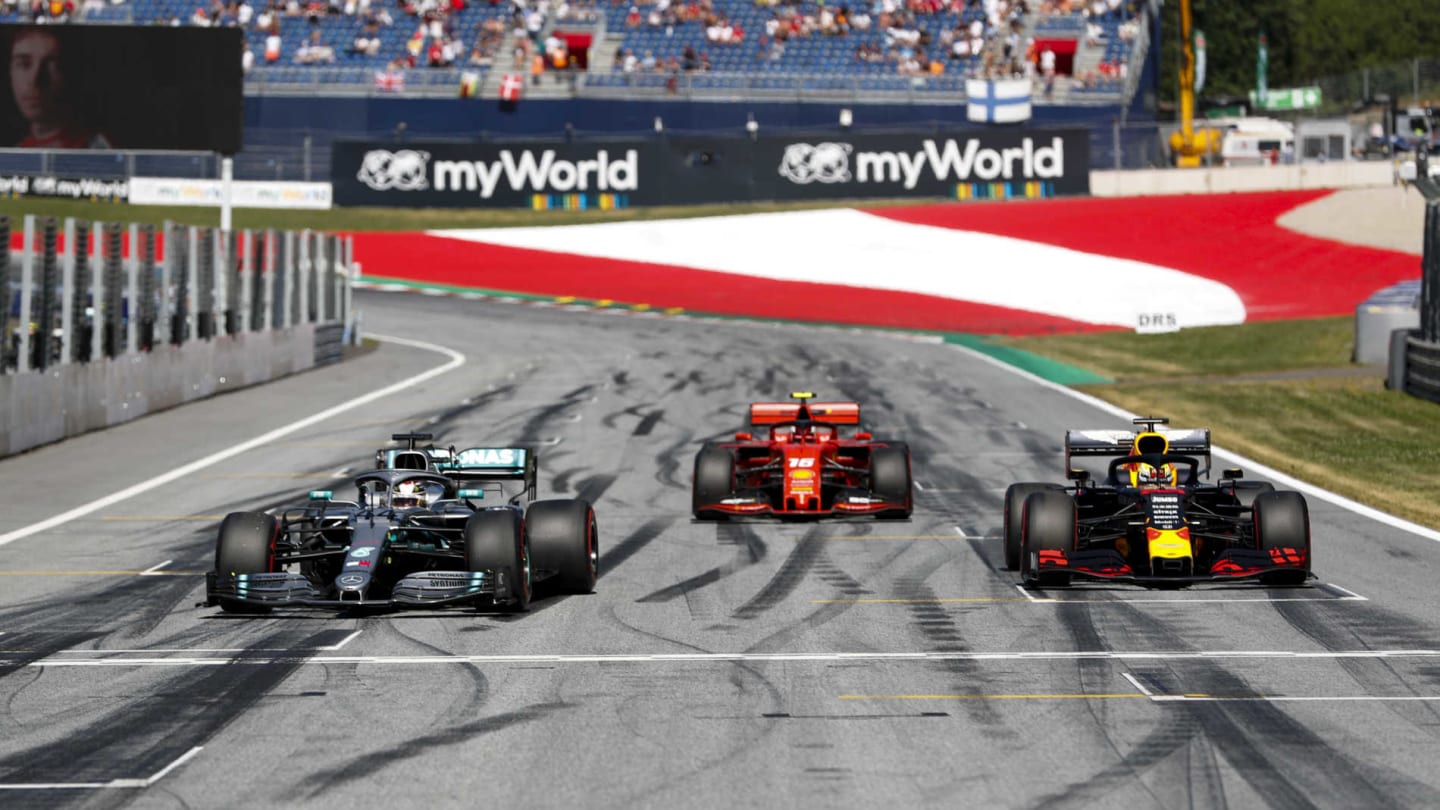
Technical
Front Wings: The differing designs of Mercedes, Ferrari and the rest of the 2019 grid

Share

The 2019 season has brought with it a raft of technical regulation changes, but perhaps the most noticeable is the wider, simple front wings that grace this year's F1 cars. Interestingly, the first test revealed a wide variety of initial front wing designs - but who has done what and why?
In shaping the front wing there’s always been a double challenge: a) Using it to direct the airflow around the front tyre in the best way possible (something that is currently crucial for overall aero efficiency) and b) In directly generating downforce from the wing itself. The new regulations have changed the point of that trade-off – and in these early stages there’s no agreement on where the best trade-off is.
Widening the wing by 100mm, taking it out closer to level with the tyre, has helped the teams overcome the banning of the multiple element endplates in turning the flow around the tyre. But that airflow still needs some encouragement from the shaping of the wing to do that. Intriguingly, there is virtually no uniformity between the teams in that shaping.
The two extremes of philosophy are represented by Mercedes and Red Bull at one end and Alfa Romeo and Ferrari at the other. The Merc W10 and Red Bull RB15 each feature wings that at the outboard ends use the full allowable depth, rather than having them taper down to clear a space ahead of the tyre – as Alfa and Ferrari have done. Here are the specifics...
Alfa Romeo C38
)
This is the most extreme example of minimising the area of the elements directly in front of the tyre. Outboard of the flap adjusters (outward-pointing to encourage the air to head that way) the elements drop down dramatically, leaving a lot of clear space directly ahead of the tyre, this making it simpler to turn the flow around the tyre but robbing the wing of downforce-producing flap area.
Ferrari SF90
)
The Ferrari features a more swoopy and less extreme version of the philosophy seen on the Alfa, with the five elements swooping up from the neutral central section before bunching together low down at the outboard ends. The bottom of the wing swoops upwards at the outer ends to create a big ‘throat’ beneath there, encouraging the flow around the tyre. The upper elements swoop downwards to meet that upward sweep, converging well below the maximum height allowed.
Toro Rosso STR14
)
Red Bull’s junior team has opted for the opposite approach to that of the main team, with an Alfa/Ferrari-like geometry that uses the maximum depth only at the inboard ends before the elements descend laterally towards the outboard ends ahead of the tyre. The elements themselves are not as extravagantly contoured as those of the more sophisticated Ferrari.
Racing Point RP19
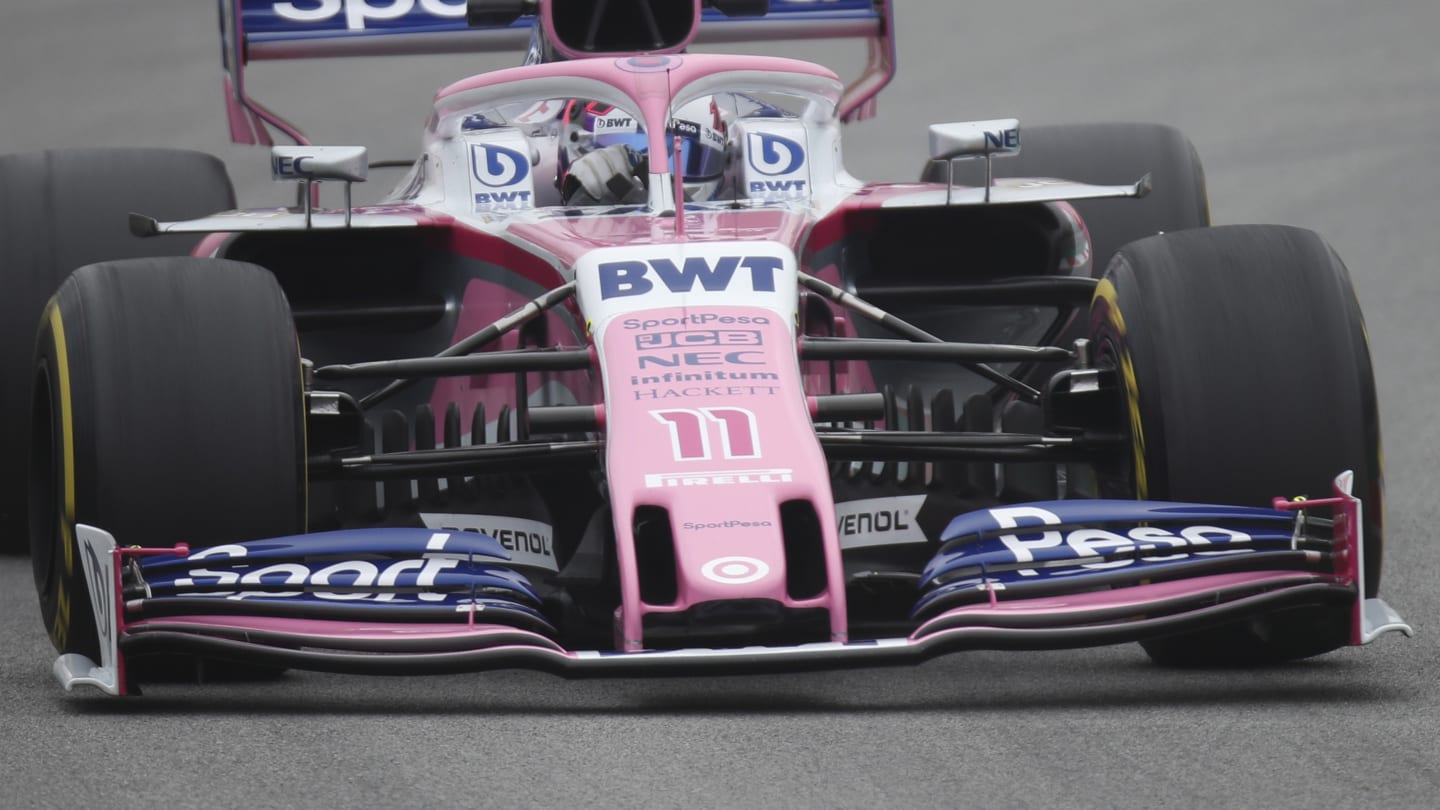
Racing Point’s initial front wing represents the middle ground in philosophies, with a fairly mild downward descent of the upper elements as they head outboard to use up about half of the permitted depth as they converge ahead of the tyre. But that convergence comes towards the top of the allowed depth because the bottom of the wing meets the endplate about half way up, creating a large throat area beneath.
McLaren MCL34
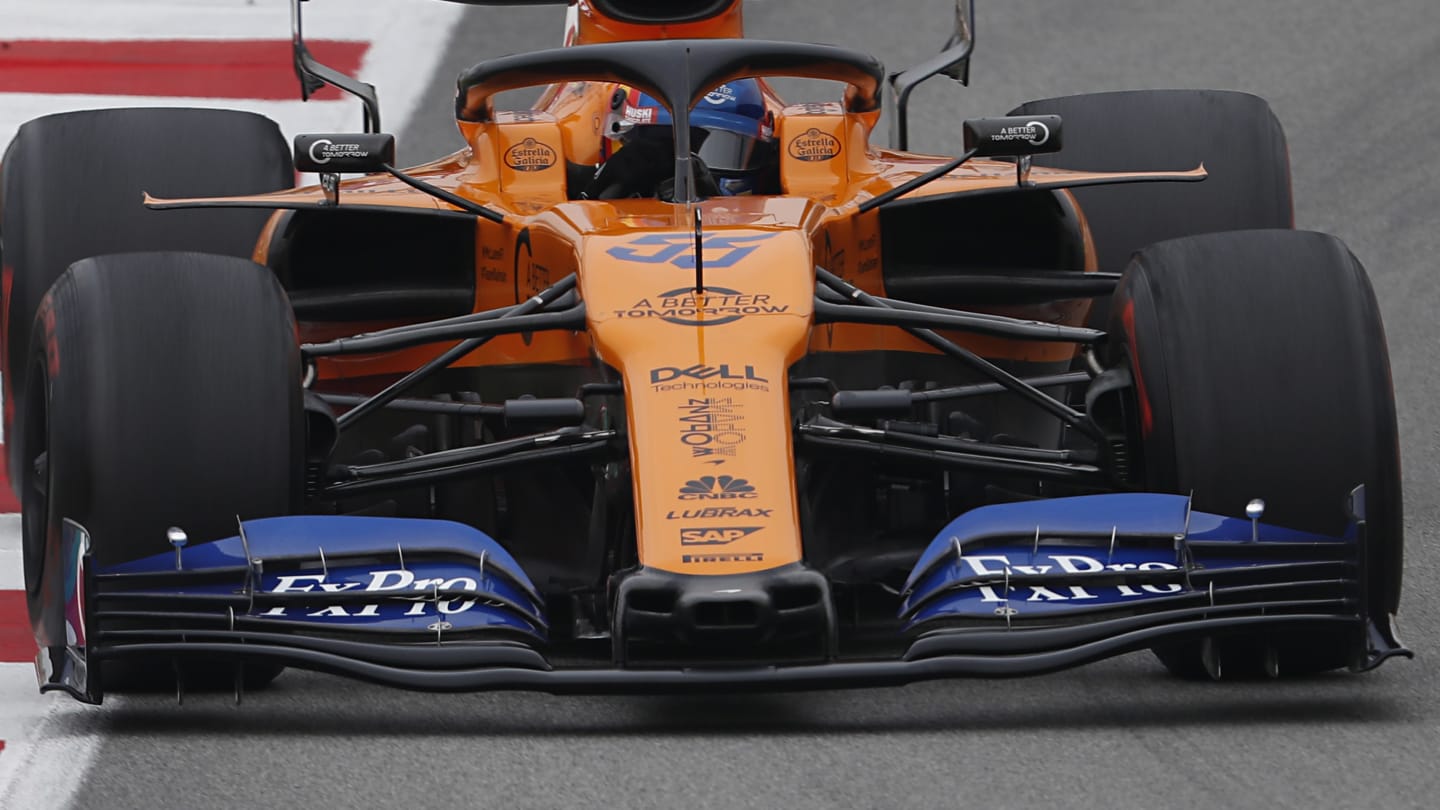
Another middle ground wing, the McLaren’s elements swoop up from the inboard neutral section in a more aggressive way than the Racing Point’s. The bottom of the wing rises up towards the outboard in a more pronounced way. The elements inboard of the flap adjusters sit higher than those outboard, with a sudden step-like separation.
Renault RS19
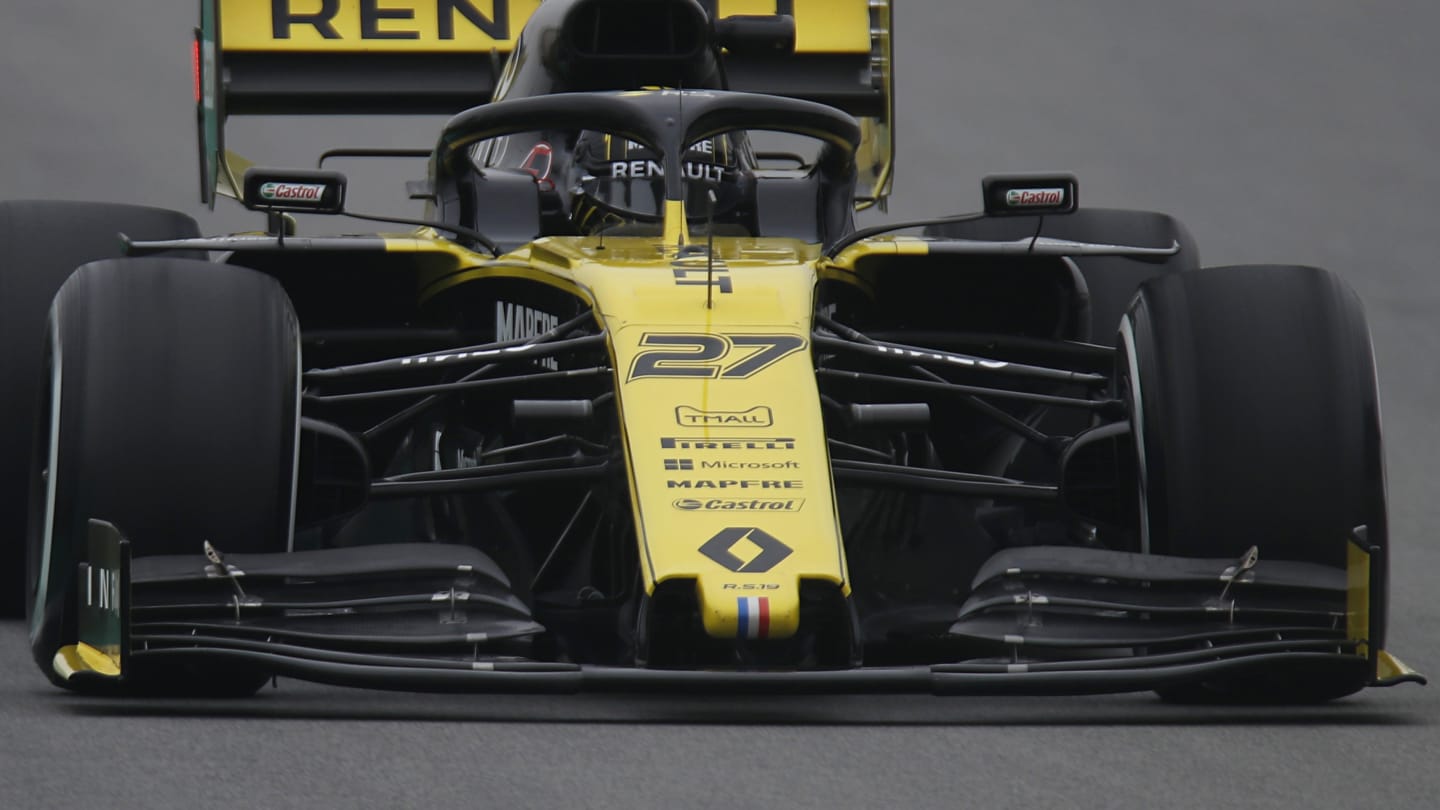
The Renault’s wing elements are quite mildly bunched at the outboard ends in quite a benign-looking way. The throat area beneath the outboard end of the wing is similarly undramatic in profiling as the bottom of the wing sweeps up quite mildly. At the outer ends the elements use up around half of the permitted depth, significantly more than the Ferrari, significantly less than the Merc.
Haas VF-19
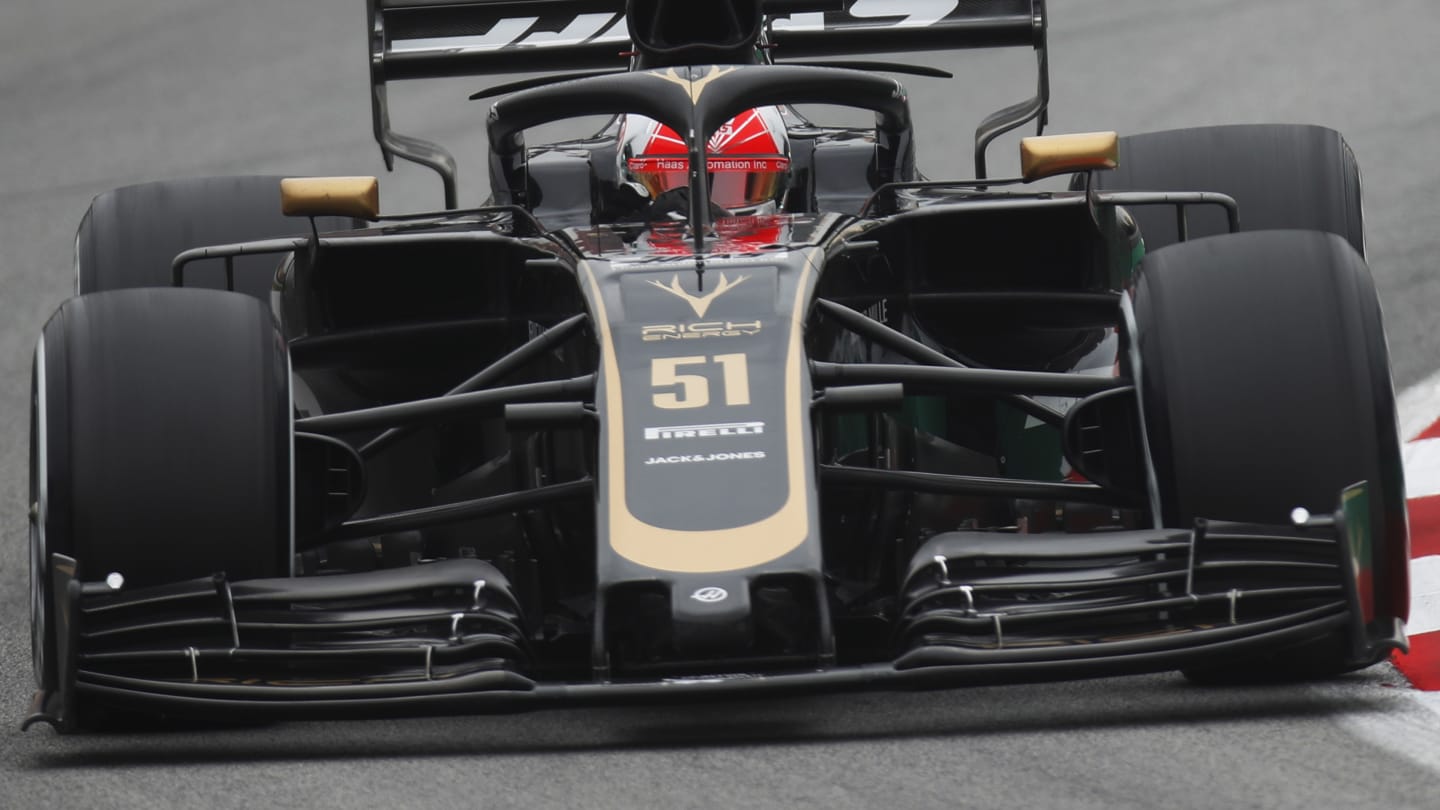
Interestingly, although the Haas’ aerodynamics are conceived in Ferrari’s wind tunnel by seconded Ferrari aerodynamicists, the initial front wing on the VF-19 employs the opposite philosophy to that of the SF90. This one is very much aligned with that of the Mercedes, featuring full-depth outboard elements, albeit with a milder upsweep of the bottom element to give a shallower throat beneath. This maximises wing element area but will make for a less powerful outwash.
Williams FW42

The wing elements use up the maximum permitted height ahead of the tyre, with two generously-proportioned upper flaps bleeding into three skinnier lower elements at the outboard ends. The upward sweep of the bottom edge of the wing is quite mild but meets the endplate at a notably higher point than the vortex tunnel on the other side of the endplate, seeking to create a more powerful vortex.
Red Bull RB15
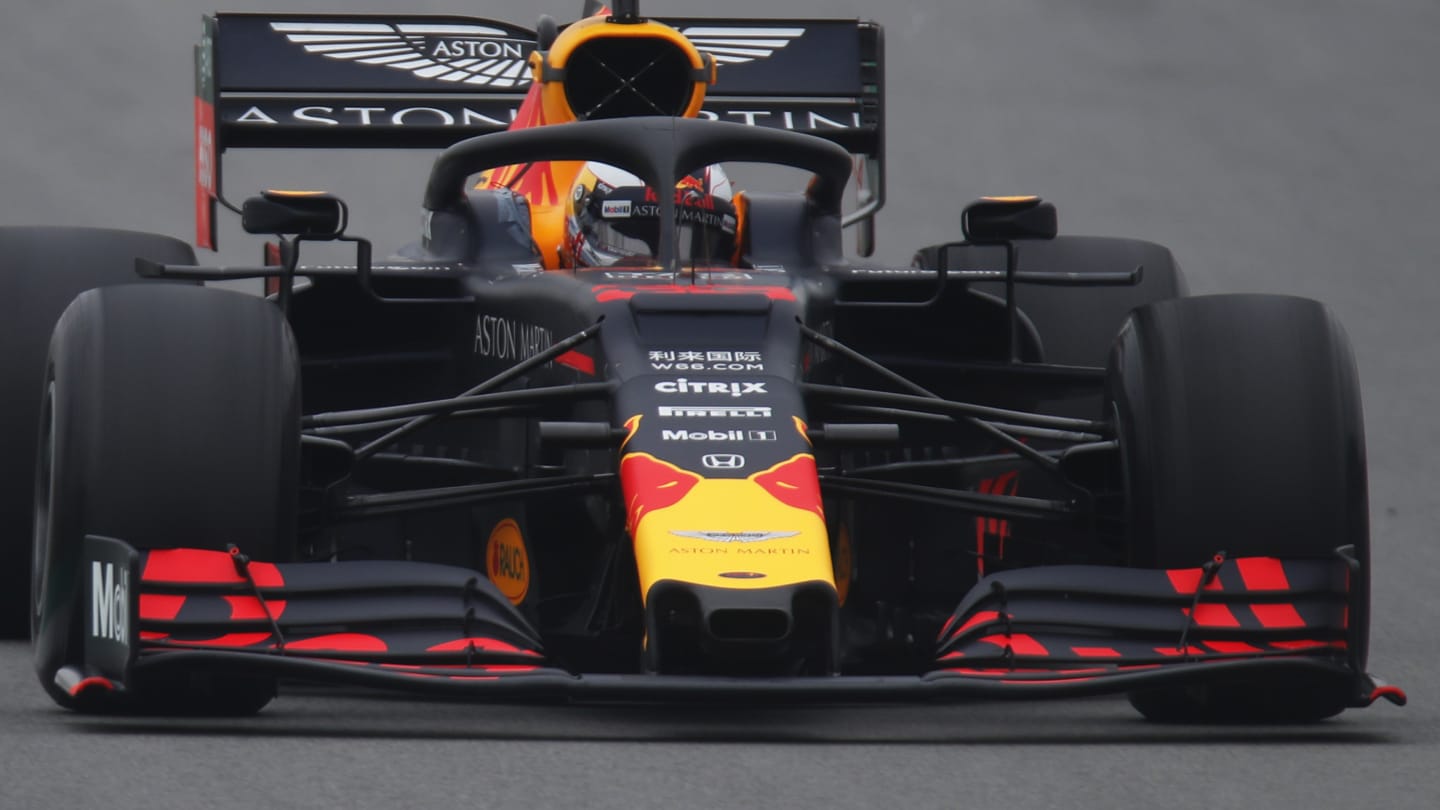
Uniquely, the Red Bull has maximum depth elements at the outboard, but not inboard. The area ahead of the tyre is separated from the inboard area by the flap adjusters but with a very distinct step change reduction in the flap area inboard. This is the opposite to the step change of the McLaren wing, which reduces outboard of the adjusters. The upward sweep of the bottom of the wing is quite mild.
Mercedes W10
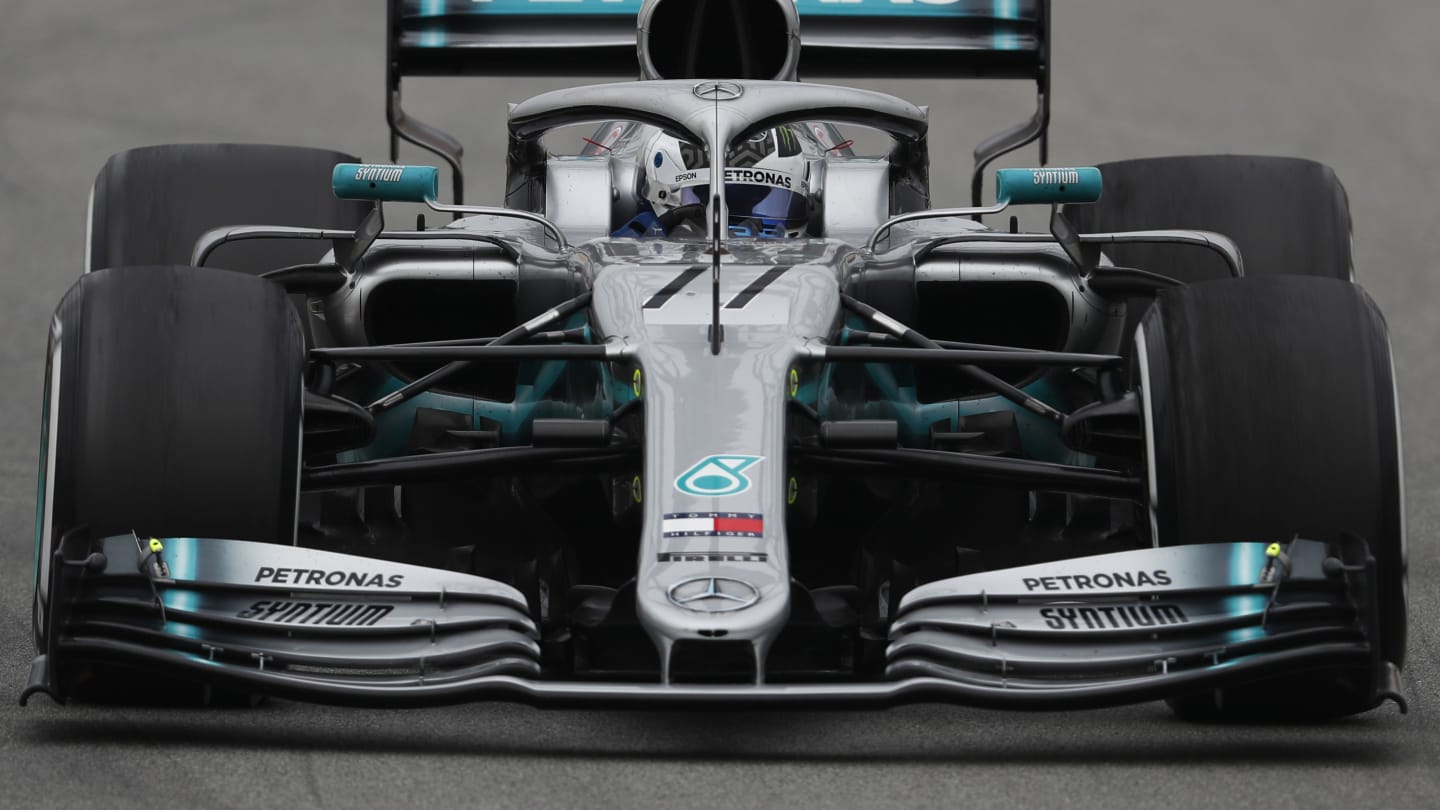
The Merc’s elements rise uniformly upwards from the inboard towards the endplates, using up the maximum permitted depth ahead of the tyre. Although this may appear to form a blockage to creating an outwash, there is a very pronounced upward sweep of the bottom of the wing, creating very big throat area that will help compensate. Uniquely, the upper endplate wall is aligned slightly inwards, helping to link up with the elements to create a vortex to help outwash.
YOU MIGHT ALSO LIKE

Video HIGHLIGHTS: Catch up on Verstappen's stellar victory at the Japanese Grand Prix
News Antonelli hails ‘boost of confidence’ in Suzuka after ‘mentally tough’ weekend
Podcast F1 NATION: A first win of the year for Verstappen, but did McLaren miss a trick? It's our Japanese GP review
Report Verstappen surges to fourth consecutive Japanese GP victory ahead of Norris and Piastri

